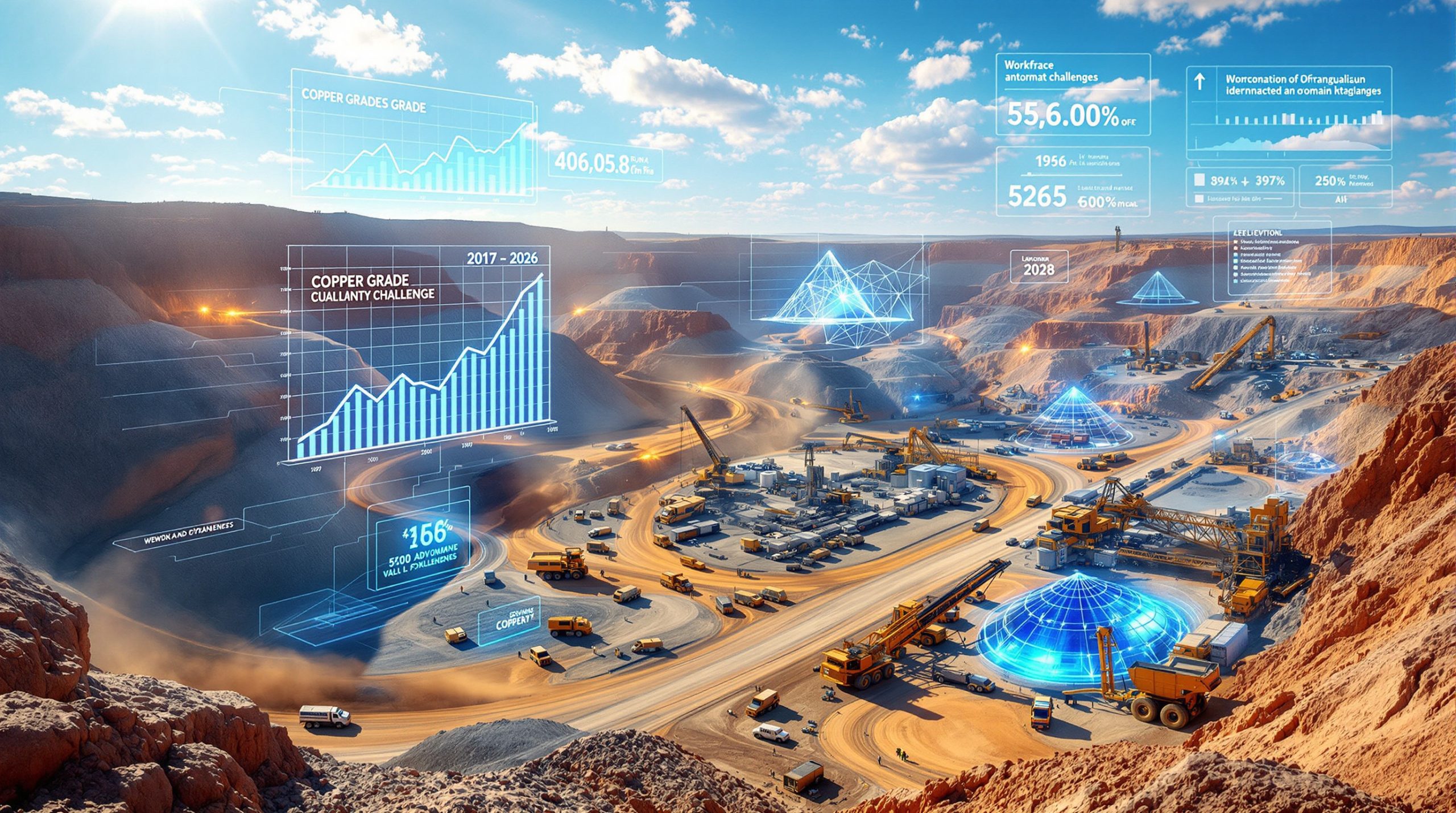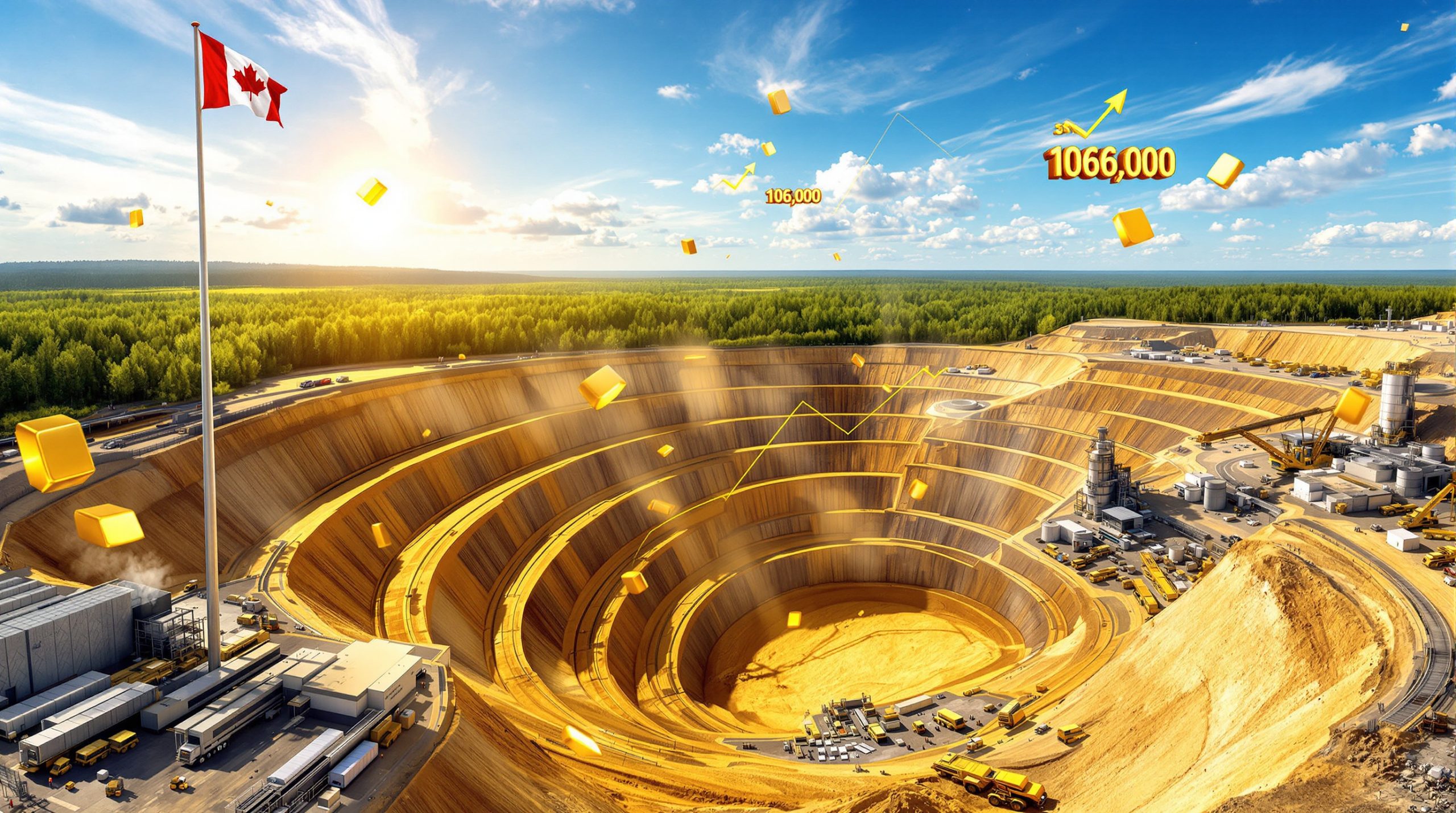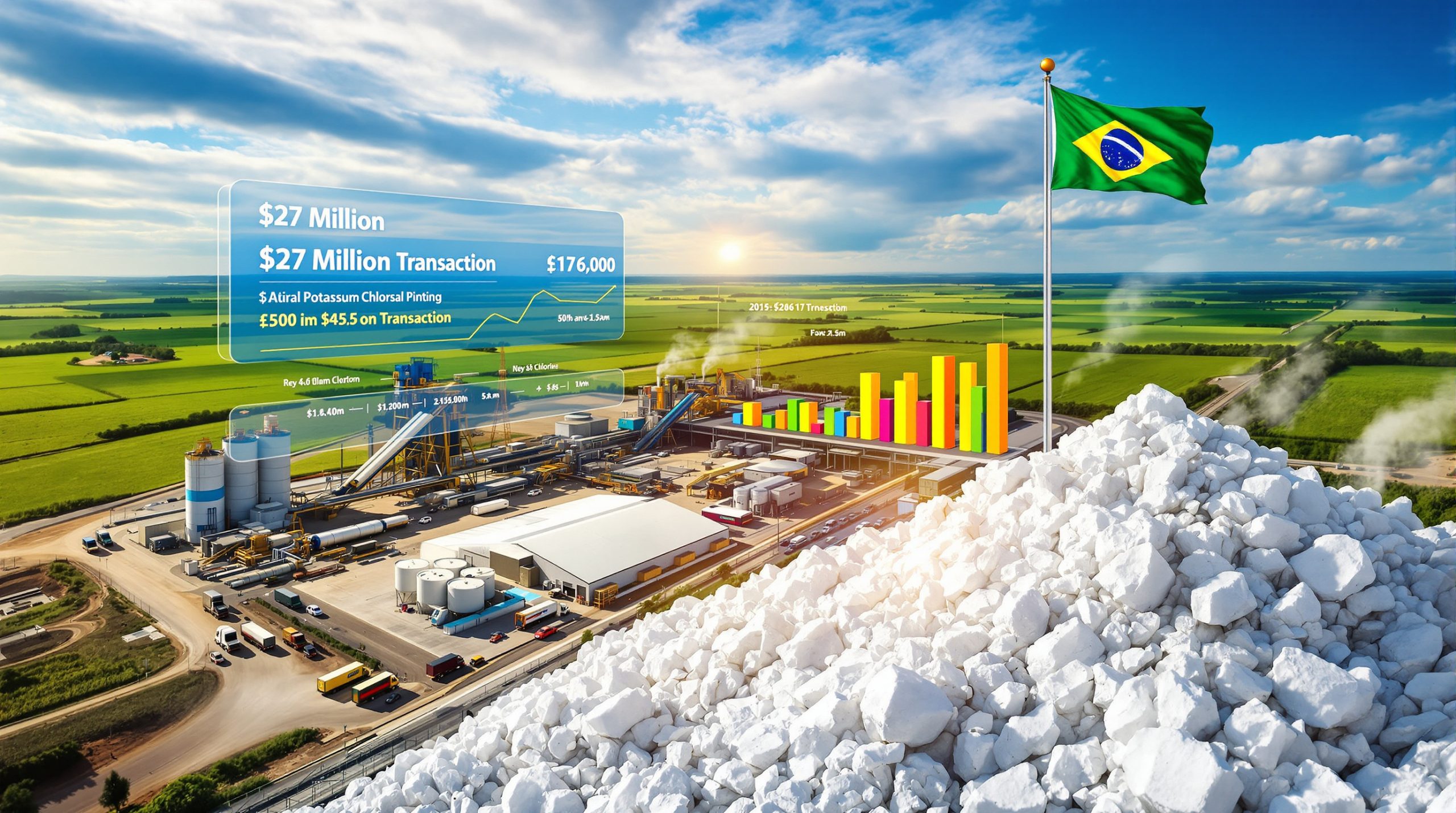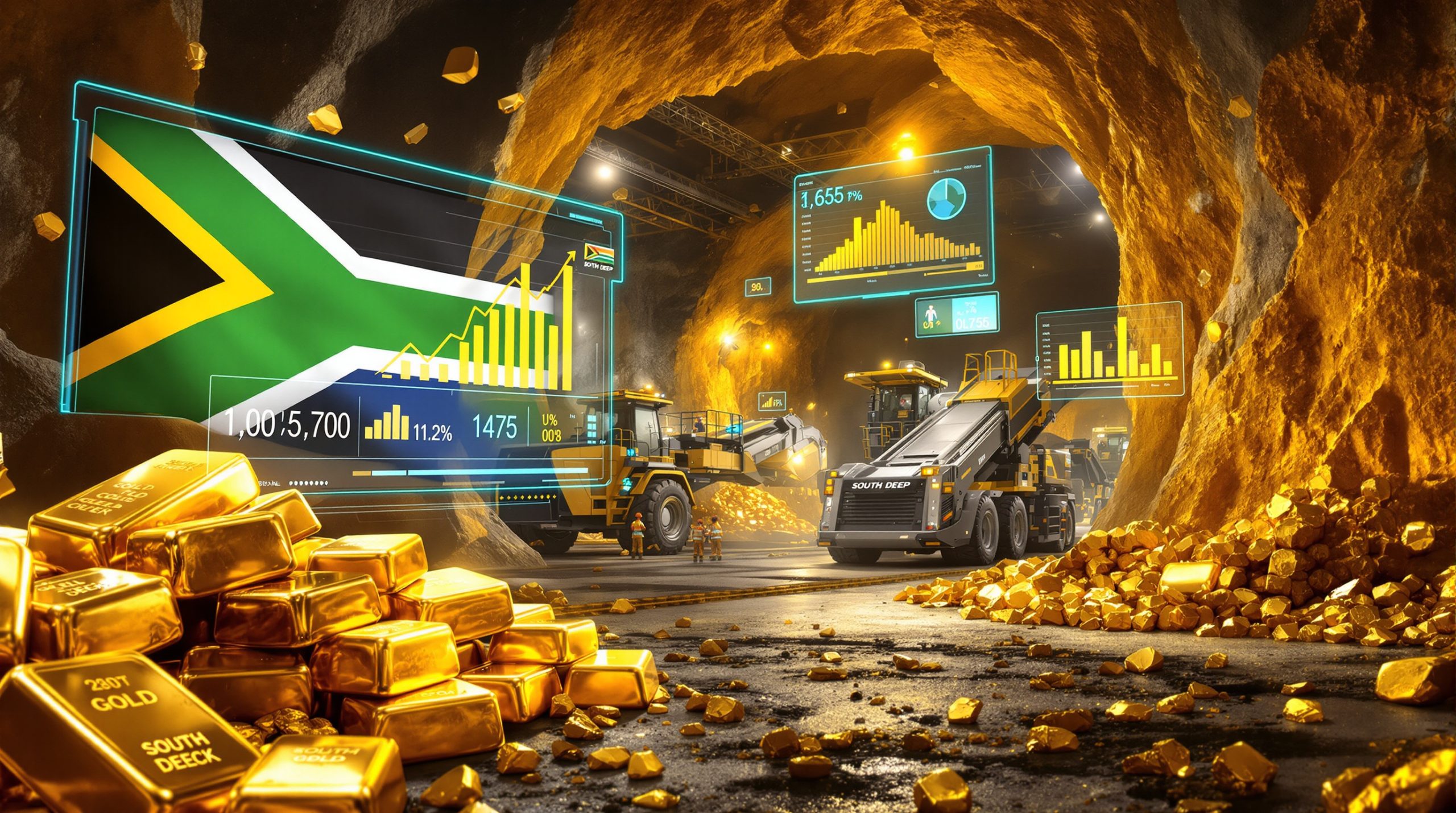Deep-Sea Mining for Critical Minerals: The New Resource Frontier
Deep-sea mining represents the next frontier in resource extraction, targeting mineral-rich deposits located thousands of meters below the ocean's surface. These underwater resources contain critical minerals essential for modern technology and critical minerals energy transition, but their extraction has sparked intense international debate over environmental impacts, economic benefits, and regulatory frameworks.
The process involves specialized equipment descending to extreme depths to collect mineral-rich materials formed over millions of years. As global demand for critical minerals surges, this previously untapped resource has become the center of geopolitical tensions and environmental concerns.
The Critical Minerals at Stake
Deep-sea mining targets several types of mineral deposits containing elements crucial for modern technology:
- Polymetallic nodules: Potato-sized rock-like formations rich in nickel, copper, cobalt, and manganese
- Seafloor massive sulfides: Found near hydrothermal vents, containing copper, zinc, gold, and silver
- Cobalt-rich crusts: Formed on underwater mountains, containing cobalt, platinum, and rare earth elements
These minerals are essential components in:
- Electric vehicle batteries (nickel, cobalt)
- Renewable energy infrastructure (copper, manganese)
- Steel production (manganese)
- Electronics and defense technologies (rare earth elements)
How Does Deep-Sea Mining Technology Work?
Deep-sea mining employs sophisticated robotic systems designed to operate under extreme pressure conditions. The basic collection process involves remotely operated vehicles that motor along the seafloor, vacuuming up nodules which are then transported through riser systems to surface vessels.
According to recent reports, these operations must function at depths exceeding 4,000 meters below sea level in the abyssal zone, where pressure exceeds 400 times atmospheric pressure and where specialized equipment must withstand corrosive saltwater environments.
Collection Systems and Extraction Methods
The extraction process follows several key stages:
-
Deployment: Specialized vessels position over target areas in the deep ocean
-
Descent: Remotely operated vehicles (ROVs) or autonomous underwater vehicles (AUVs) descend 4+ kilometers to the seafloor
-
Collection: For nodule mining, vehicles use vacuum-like systems to collect polymetallic nodules from the seabed
-
Transport: Collected materials are pumped through riser systems to the surface vessel
-
Processing: Initial separation occurs onboard before materials are transported to shore facilities for refinement
Technological Challenges at Extreme Depths
Operating in the deep sea presents unique engineering challenges that require significant technological innovation:
-
Pressure management: Equipment must withstand pressures exceeding 400 times atmospheric pressure
-
Remote operation: All systems must function reliably with minimal human intervention
-
Energy requirements: Powering equipment at these depths requires significant energy transfer
-
Material durability: Components must resist corrosion and degradation in harsh saltwater environments
-
Navigation: Precise positioning systems are needed in environments with limited visibility
Where is Deep-Sea Mining Being Explored?
The primary focus of deep-sea mining exploration is vast areas of the Pacific Ocean, with the Clarion-Clipperton Zone (CCZ) representing the largest and most promising region for polymetallic nodules benefits.
The Clarion-Clipperton Zone: A Mineral Treasure Trove
The CCZ, located between Hawaii and Mexico in the Pacific Ocean, has become the focal point for deep-sea mining exploration:
-
Spans approximately 4.5 million square kilometers (larger than Queensland and Western Australia combined)
-
Contains an estimated 21 billion tonnes of polymetallic nodules
-
Has been divided into exploration contract areas for 17 different operators
-
Features nodule concentrations of up to 15 kg per square meter in some locations
According to ABC News reporting in September 2025, the CCZ represents an area "bigger than Queensland and Western Australia combined" and is the primary target for companies seeking to extract critical minerals from the ocean floor.
Other Significant Exploration Areas
While the CCZ represents the largest potential mining area, other regions being investigated include:
-
Mid-Atlantic Ridge: Rich in seafloor massive sulfides near hydrothermal vents
-
Indian Ocean: Areas with high concentrations of polymetallic nodules
-
Western Pacific: Locations with cobalt-rich ferromanganese crusts on seamounts
-
National waters: Some countries are exploring resources within their Exclusive Economic Zones
What Environmental Concerns Does Deep-Sea Mining Raise?
Environmental scientists have raised significant concerns about the potential impacts of deep-sea mining for critical minerals on marine ecosystems that have remained largely undisturbed for millions of years.
Ecosystem Disruption and Biodiversity Impacts
The deep ocean hosts unique ecosystems that have evolved under stable conditions for millions of years. Mining activities could:
-
Directly destroy habitats where nodules are collected
-
Disrupt deep-sea food webs with unknown cascading effects
-
Impact species that depend on nodules as habitat (many attach to nodule surfaces)
-
Affect organisms not yet discovered or documented by science
According to ABC News reporting in 2025, "there are untold species at these depths that are yet to be discovered or documented," highlighting the risk of biodiversity loss before these species are even known to science.
Sediment Plumes and Water Column Effects
One of the most significant concerns involves sediment disturbance, which occurs in two primary forms:
-
Collection plumes: The mining process stirs up seafloor sediments, creating clouds that can travel considerable distances
-
Discharge plumes: After separating nodules from sediment, the remaining material is typically returned to the ocean
-
Potential impacts: These plumes may smother filter-feeding organisms, alter water chemistry, and reduce light penetration
ABC News noted in 2025 that "scientists are worried about the impacts on fish and other species if this sediment ends up being swept well beyond the mining zone," highlighting concerns about the far-reaching effects of sediment plumes.
Scientific Uncertainties and Research Gaps
Scientists emphasize that much remains unknown about deep-sea environments:
-
Many species in these regions remain undiscovered and unstudied
-
Recovery rates for disturbed deep-sea habitats are extremely slow
-
The ecological function of nodules themselves is not fully understood
-
Some research suggests nodules may play roles in oxygen generation and carbon cycling
A particularly noteworthy scientific development was reported by ABC News in 2025: "One recent study suggested the nodules lying on the sea floor could be generating oxygen. It's a stunning hypothesis given light and photosynthesis are usually required to create oxygen." While mining proponents have dismissed these findings as "flawed," many scientists argue this warrants further research before mining proceeds.
How is Deep-Sea Mining Regulated?
The regulatory framework for deep-sea mining involves a complex interplay of international organizations, national laws, and competing geopolitical interests.
The International Seabed Authority's Role
The International Seabed Authority (ISA), established under the United Nations Convention on the Law of the Sea (UNCLOS), is responsible for:
-
Regulating mineral-related activities in international waters
-
Developing the Mining Code to govern commercial exploitation
-
Issuing exploration contracts to qualified applicants
-
Ensuring protection of the marine environment
-
Managing resource benefits "for the benefit of humankind"
According to ABC News reporting in September 2025, the ISA has "169 countries and the EU as members" and is "tasked with regulating the mining of deep-sea resources in international waters, while also ensuring their protection 'for the benefit of humankind.'" However, the organization "is still yet to develop regulations" for commercial mining.
National Approaches and Regulatory Challenges
The regulatory landscape is complicated by varying national approaches:
-
Member states: 169 countries plus the EU participate in the ISA framework
-
Non-members: Some nations, notably the United States, are not party to UNCLOS
-
Unilateral actions: Some countries may pursue mining independently of international frameworks
-
Enforcement challenges: Monitoring and enforcing regulations in remote ocean areas is difficult
A significant development occurred in April 2025 when US President Donald Trump "signed an executive order… expediting licence approvals for deep-sea mining in US and international waters," including the CCZ, "even though it lies far beyond its territorial waters" (ABC News, September 2025). This unilateral approach has raised concerns about compliance with international law.
The Push for Moratoriums and Precautionary Approaches
Amid scientific uncertainty, many voices advocate for caution:
-
38 countries support a moratorium or precautionary pause on deep-sea mining
-
Environmental organizations call for comprehensive research before commercial extraction
-
Some companies have pledged not to source minerals from deep-sea mining
-
Pacific Island nations have expressed particular concern about potential impacts
Palau President Surangel Whipps Jr. has been particularly vocal, stating: "What lies in the deep sea does not belong to any one nation or corporation, but to all of us and future generations" (ABC News, September 2025).
What Economic Factors Drive Interest in Deep-Sea Mining?
The economic case for deep-sea mining centers on growing demand for critical minerals and concerns about supply chain vulnerabilities.
Critical Mineral Supply Chains and Security
Several economic factors fuel interest in deep-sea resources:
-
Supply concentration: Terrestrial mining of critical minerals is concentrated in a few countries
-
Geopolitical concerns: Nations seek to reduce dependence on foreign suppliers
-
Growing demand: The clean energy transition requires significantly more critical minerals
-
Price volatility: Mineral markets have experienced significant price fluctuations
According to ABC News reporting in 2025, one driver of US interest in deep-sea mining is that "Beijing dominates the processing and refining of critical minerals and rare earths," with the Trump administration regarding "these products as essential to US national security and economic development."
Industry Projections and Investment Landscape
The business case for deep-sea mining remains evolving:
-
Industry proponents suggest it could become a multi-trillion-dollar sector
-
Several deep‑sea mining companies have invested hundreds of millions in exploration and technology
-
Economic viability depends on mineral prices, extraction costs, and regulatory requirements
-
Some financial institutions have expressed reluctance to fund projects due to environmental concerns
The Metals Company, a leading proponent of deep-sea mining, has "spent hundreds of millions of dollars on research that proves the extraction can be done sustainably," according to ABC News reporting in 2025.
Comparing Environmental Footprints: Land vs. Sea
Proponents argue that deep-sea mining may offer environmental advantages over terrestrial mining:
-
No need for deforestation or habitat clearing
-
No displacement of human communities
-
Lower direct carbon emissions compared to some land-based operations
-
Potentially lower water usage and chemical processing requirements
According to industry representatives, deep-sea mining "will be far less damaging than mining on land" and represents a "trade-off the world needs to make" to secure critical minerals for clean energy technologies (ABC News, September 2025).
How is Geopolitics Shaping the Deep-Sea Mining Debate?
Deep-sea mining has become a flashpoint in broader geopolitical tensions, particularly between the United States and China.
US-China Tensions and Critical Mineral Competition
Geopolitical rivalries influence approaches to deep-sea resources:
-
China currently dominates processing of many critical minerals
-
The US seeks to reduce dependence on Chinese supply chains
-
Trump's executive order in April 2025 aims to expedite deep-sea mining approvals
-
This unilateral approach has raised concerns about compliance with international law
ABC News reported in September 2025 that "one reason Trump wants to open up seabed mining is China," noting that "Beijing dominates the processing and refining of critical minerals and rare earths."
Pacific Nations' Stakes and Perspectives
Pacific Island nations have particular interests in deep-sea mining developments:
-
Many have exploration contracts or partnerships within their territorial waters
-
These nations balance potential economic benefits against environmental risks
-
Some, like Palau, have taken strong positions supporting precautionary approaches
-
Regional cooperation frameworks are emerging to address shared concerns
Palau President Surangel Whipps Jr. has expressed concern that "without proper protections in place, the impacts on the ocean could be irreversible" (ABC News, September 2025).
International Cooperation vs. Unilateral Action
The tension between collaborative and independent approaches defines the current landscape:
-
The ISA framework represents a multilateral approach to resource management
-
Unilateral licensing outside this framework could undermine international governance
-
Questions remain about enforcement mechanisms for international regulations
-
The precedent set by deep-sea mining could influence other global commons issues
According to ABC News reporting in 2025, the US approach "could spark a geopolitical brawl in the rush for this precious treasure at the bottom of the ocean — one Australia could be drawn into as it spreads across the Pacific."
What Are the Latest Developments in Deep-Sea Mining?
The field of deep-sea mining continues to evolve rapidly, with ongoing testing, research, and shifting stakeholder positions.
Current Testing and Pilot Projects
Several companies have conducted tests of mining equipment and processes:
-
The Metals Company completed collection system tests in the CCZ in 2022-2023
-
Japan conducted the world's first test mining of seafloor massive sulfides in 2017
-
Belgium's Global Sea Mineral Resources has tested nodule collection vehicles
-
China has developed and tested its own deep-sea mining systems
ABC News reported in 2025 that "until now, bringing these nodules to the surface has only been done in testing," indicating that commercial-scale operations have not yet commenced.
Scientific Research and Environmental Baseline Studies
Extensive research continues to understand deep-sea environments:
-
Multi-year environmental baseline studies document pre-mining conditions
-
Research vessels regularly conduct surveys in potential mining areas
-
Independent scientific expeditions continue to discover new species
-
Environmental impact assessments are being developed for proposed operations
Recent research has produced surprising findings, including the hypothesis that nodules may generate oxygen, described by ABC News in 2025 as "a stunning hypothesis given light and photosynthesis are usually required to create oxygen."
Emerging Stakeholder Positions
The landscape of stakeholder positions continues to evolve:
-
Some major technology companies have committed to avoiding deep-sea minerals
-
Environmental NGOs have intensified campaigns against deep‑sea mining controversy
-
Scientific bodies have called for expanded research before commercial activities
-
Indigenous communities have raised concerns about cultural and spiritual impacts
According to ABC News reporting in 2025, "38 countries are pushing for a moratorium or precautionary pause on deep-sea mining," indicating significant international opposition to rapid development of the industry.
What Alternatives Exist to Deep-Sea Mining?
While deep-sea mining represents one approach to securing critical minerals, several alternatives could reduce or eliminate the need to exploit ocean resources.
Terrestrial Mining Innovations and Recycling
Several alternatives could reduce pressure to exploit deep-sea resources:
-
Improved recycling of critical minerals from electronic waste
-
Development of new modern mining technology with reduced environmental impacts
-
Substitution of abundant materials for rare ones in key technologies
-
Urban mining of landfills and industrial waste for valuable elements
Technology Adaptations and Material Substitutions
Innovation in technology design offers another pathway:
-
Developing batteries that use fewer critical minerals
-
Creating motors and generators that don't require rare earth elements
-
Engineering more durable products to reduce replacement frequency
-
Designing products for easier disassembly and recycling
Circular Economy Approaches
Systemic changes to resource use could fundamentally alter mineral demand:
-
Product-as-service models that incentivize longevity and recycling
-
Standardization of components to facilitate reuse
-
Extended producer responsibility frameworks
-
Shared resource use through product-service systems
What Might the Future of Deep-Sea Mining Look Like?
The future of deep-sea mining remains uncertain, with several possible pathways depending on technological developments, scientific research, regulatory decisions, and geopolitical dynamics.
Potential Regulatory Scenarios
Several possible futures exist for deep-sea mining governance:
-
Comprehensive regulation: The ISA could finalize a robust Mining Code with strong environmental protections
-
Fragmented approach: Different nations might pursue varying regulatory frameworks
-
Moratorium extension: Scientific uncertainty could lead to extended pauses on commercial mining
-
Managed extraction: Limited mining might proceed in specific areas with extensive monitoring
The US regulator predicted that Trump's executive order would spark a "gold rush" (ABC News, September 2025), suggesting a potential scenario of accelerated development with limited oversight.
Balancing Resource Needs and Ocean Protection
The ultimate challenge involves weighing competing priorities:
-
Meeting growing demand for minerals needed in clean energy technologies
-
Protecting largely unknown deep-sea ecosystems
-
Ensuring equitable distribution of benefits from common heritage resources
-
Applying precautionary principles in the face of scientific uncertainty
Palau President Surangel Whipps Jr. has emphasized that deep-sea resources "belong to all of us and future generations" (ABC News, September 2025), highlighting the ethical dimensions of resource extraction.
The Role of Public Opinion and Consumer Choices
Public awareness and market forces may significantly influence outcomes:
-
Growing consumer demand for responsibly sourced materials
-
Investor pressure regarding environmental, social, and governance factors
-
Public perception of ocean health and conservation priorities
-
Transparency in supply chains and product labeling
FAQ: Deep-Sea Mining Explained
What depths are involved in deep-sea mining?
Deep-sea mining typically targets resources at depths between 1,500 and 6,000 meters below sea level, with most polymetallic nodule fields in the CCZ located at approximately 4,000-5,000 meters depth.
How long does it take for deep-sea ecosystems to recover from disturbance?
Recovery rates are extremely slow in the deep sea. Studies of experimental mining tracks created decades ago show minimal recolonization, suggesting recovery timeframes of centuries to millennia for some ecosystem components.
Who owns deep-sea minerals in international waters?
Under UNCLOS, mineral resources in international waters are designated as the "common heritage of mankind." The ISA manages these resources on behalf of humanity, with benefits intended to be shared among all nations.
Are any commercial deep-sea mining operations currently active?
As of 2025, no commercial-scale deep-sea mining operations are active in international waters. All current activities are exploratory or test-phase operations conducted under exploration contracts.
How might deep-sea mining affect climate change?
The relationship is complex. Mining could provide minerals needed for clean energy technologies but might also disturb carbon stored in deep-sea sediments or impact ocean carbon cycling. The net effect remains uncertain and requires further research.
Further Exploration
Readers interested in learning more about deep-sea mining can explore related educational content, such as ABC News' article "Deep-sea mining explained as global fight brews" and Four Corners' investigation "Race to the Bottom," which offer additional perspectives on this emerging industry and its potential impacts.
Want to Invest in the Next Major Mineral Discovery?
Discover significant ASX mineral discoveries instantly with Discovery Alert's proprietary Discovery IQ model, transforming complex data into actionable investment insights. Explore why major mineral discoveries can lead to exceptional returns by visiting Discovery Alert's dedicated discoveries page and begin your 30-day free trial to position yourself ahead of the market.




